2010 Toyota Tundra Service, Tires & Repairs
Get Started
Complete Auto Care for Your 2010 Toyota Tundra
-
TIRES FOR YOUR 2010 Toyota Tundra View Tire Info GET TIRE PRICING
-
REPAIR FOR YOUR 2010 Toyota Tundra View Repair Info SCHEDULE REPAIR
-
MAINTENANCE FOR YOUR 2010 Toyota Tundra View Maintenance Info SCHEDULE MAINTENANCE
-
OFFERS FOR YOUR 2010 Toyota Tundra Limited Time Tire Offers VIEW ALL COUPONS
2010 Toyota Tundra Tires
Recommended Tires | Tire Information
2010 Toyota Tundra Tires Sizes, Speed Ratings, and Inflation
Not sure about your 2010 Toyota Tundra tire size? Use the following chart to find information on tire size, speed rating, and inflation.
| Trim Level | Speed Rating | Inflation in PSI F/R | Tire Size |
|---|---|---|---|
| 2010 Toyota Tundra Limited* | T | 30 PSI/33 PSI | P275/65R18 |
| 2010 Toyota Tundra Limited* | T | 30 PSI/33 PSI | P255/70R18 |
| 2010 Toyota Tundra Limited* | H | 30 PSI/33 PSI | P275/55R20 |
| 2010 Toyota Tundra SR5* | T | 30 PSI/33 PSI | P255/70R18 |
| 2010 Toyota Tundra SR5* | H | 30 PSI/33 PSI | P275/55R20 |
| 2010 Toyota Tundra SR5* | T | 30 PSI/33 PSI | P275/65R18 |
| 2010 Toyota Tundra Base* | H | 30 PSI/33 PSI | P275/55R20 |
| 2010 Toyota Tundra Base* | T | 30 PSI/33 PSI | P275/65R18 |
| 2010 Toyota Tundra Base* | T | 30 PSI/33 PSI | P255/70R18 |
| 2010 Toyota Tundra Base* | R | 50 PSI/50 PSI | LT285/70R17/D |
|
2010 Toyota Tundra Limited* Speed Rating: T Inflation F/R: 30 PSI/33 PSI |
|
2010 Toyota Tundra Limited* Speed Rating: T Inflation F/R: 30 PSI/33 PSI |
|
2010 Toyota Tundra Limited* Speed Rating: H Inflation F/R: 30 PSI/33 PSI |
|
2010 Toyota Tundra SR5* Speed Rating: T Inflation F/R: 30 PSI/33 PSI |
|
2010 Toyota Tundra SR5* Speed Rating: H Inflation F/R: 30 PSI/33 PSI |
|
2010 Toyota Tundra SR5* Speed Rating: T Inflation F/R: 30 PSI/33 PSI |
|
2010 Toyota Tundra Base* Speed Rating: H Inflation F/R: 30 PSI/33 PSI |
|
2010 Toyota Tundra Base* Speed Rating: T Inflation F/R: 30 PSI/33 PSI |
|
2010 Toyota Tundra Base* Speed Rating: T Inflation F/R: 30 PSI/33 PSI |
|
2010 Toyota Tundra Base* Speed Rating: R Inflation F/R: 50 PSI/50 PSI |
* Note: these models have different tire sizes depending on vehicle options.
Recommended Tires for Your 2010 Toyota Tundra
What tires are best for a 2010 Toyota Tundra? Check out the following tire brands and types.
 ALENZA AS ULTRA
ALENZA AS ULTRA
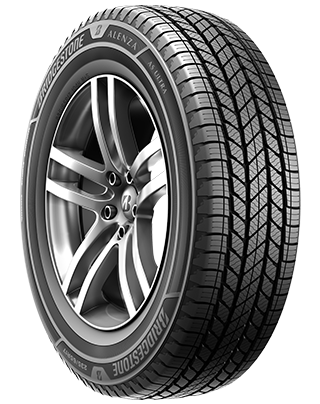
- No warranty
- All-Season
- Light Truck Tires
 Dueler A/T Revo 3
Dueler A/T Revo 3
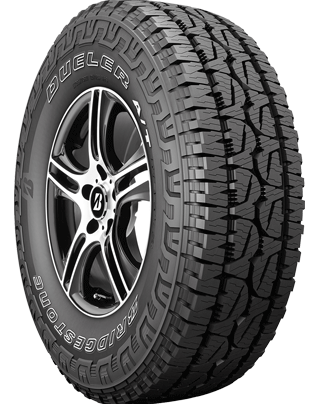
- Platinum Pact Limited Warranty
- All-Season
- Light Truck Tires
 Dueler H/T 684 II
Dueler H/T 684 II
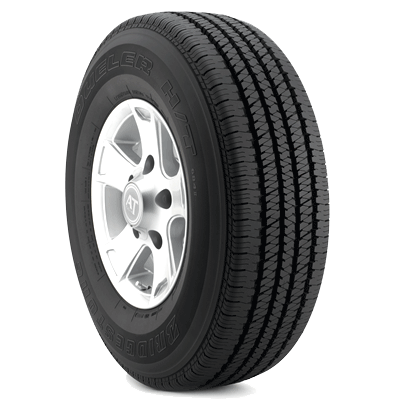
- Platinum Pact Limited Warranty
- All-Season
- Light Truck Tires
 Dueler H/T 685
Dueler H/T 685
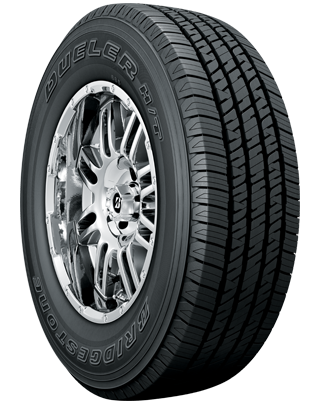
- No warranty
- All-Season
- Light Truck Tires
 WEATHERPEAK
WEATHERPEAK
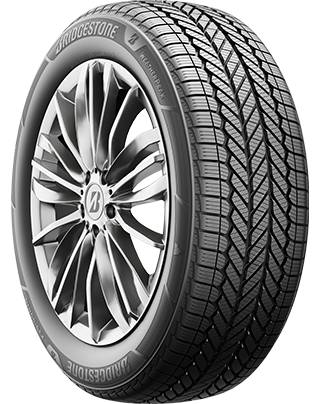
- Platinum Pact Limited Warranty
- All-Season
- Passenger Tires
 Blizzak DM-V2
Blizzak DM-V2
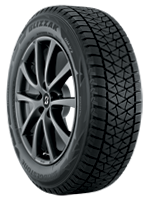
- No warranty
- Winter
- Winter
 DriveGuard Plus
DriveGuard Plus
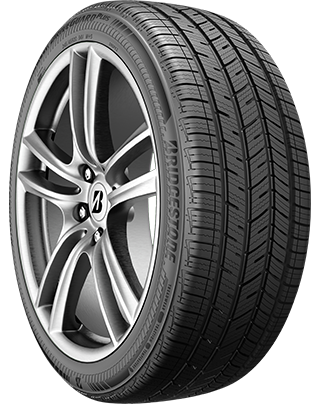
- Platinum Pact Limited Warranty
- All-Season
- Performance
 Dueler H/L Alenza
Dueler H/L Alenza
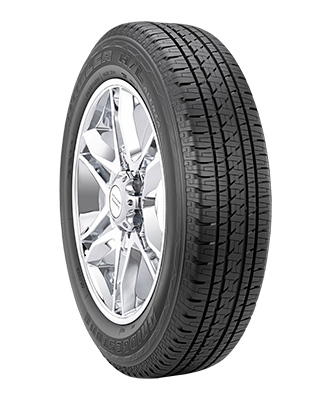
- Platinum Pact Limited Warranty
- All-Season
- Light Truck Tires
 Dueler H/L Alenza Plus
Dueler H/L Alenza Plus
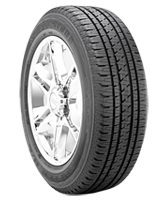
- Platinum Pact Limited Warranty
- All-Season
- Light Truck Tires
 Dueler A/T RH-S
Dueler A/T RH-S
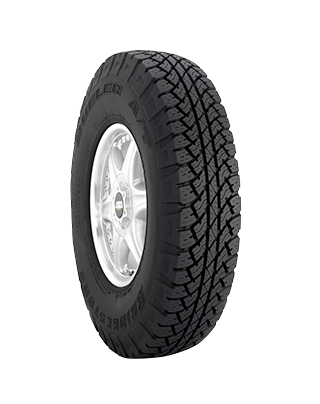
- Platinum Pact Limited Warranty
- All-Season
- Light Truck Tires
 Dueler A/T Revo 3 - LT
Dueler A/T Revo 3 - LT
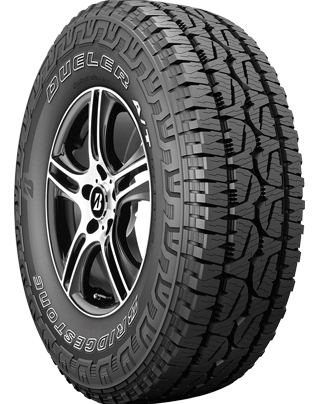
- Platinum Pact Limited Warranty
- All-Season
- Light Truck Tires
 Destination A/T2
Destination A/T2
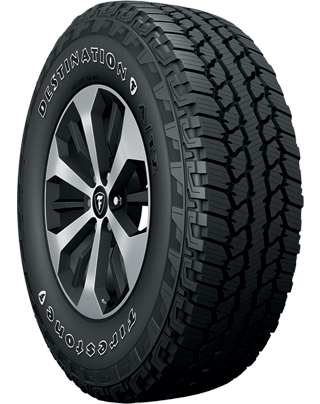
- Gold Pledge Limited Warranty
- All-Season
- Light Truck Tires
 Destination LE3
Destination LE3
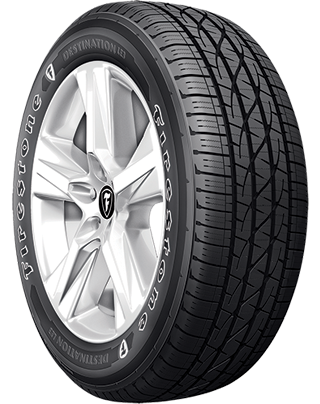
- No warranty
- All-Season
- Light Truck Tires
 Transforce HT2
Transforce HT2
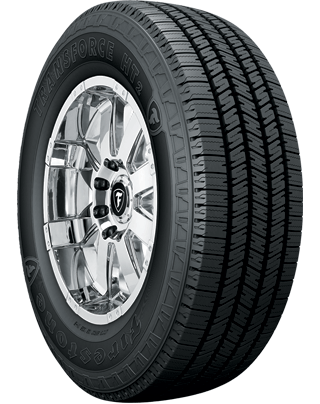
- Gold Pledge Limited Warranty
- All-Season
- Light Truck Tires
 Destination X/T
Destination X/T
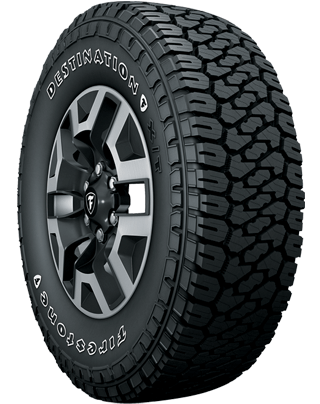
- Gold Pledge Limited Warranty
- All-Season
- Light Truck Tires
 Transforce AT2
Transforce AT2
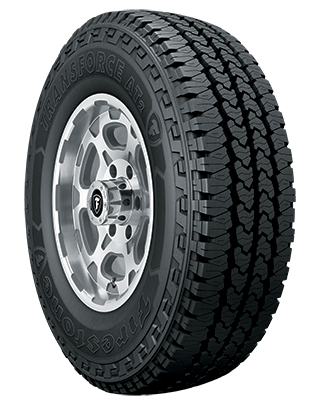
- No warranty
- All-Season
- Light Truck Tires
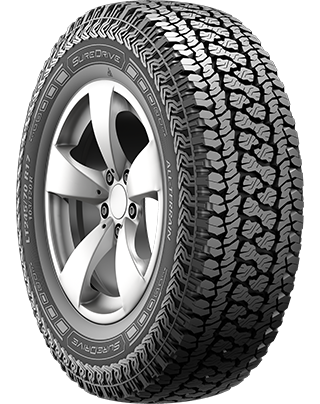
- No warranty
- All-Season
- Light Truck Tires
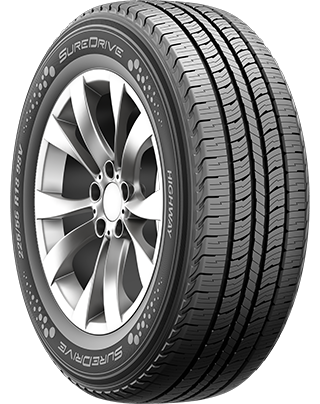
- No warranty
- All-Season
- Light Truck Tires
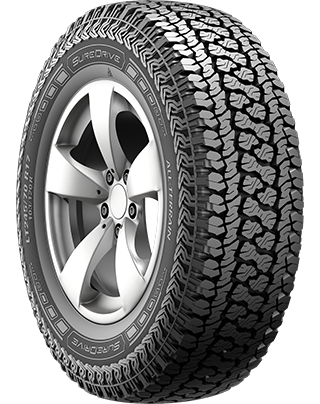
- No warranty
- All-Season
- Light Truck Tires
 OPEN COUNTRY R/T
OPEN COUNTRY R/T
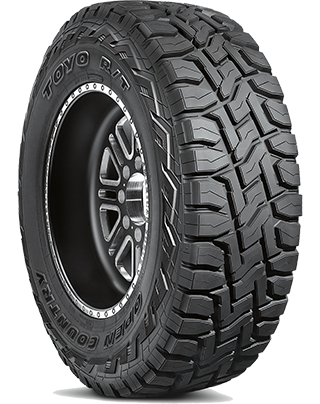
- No warranty
- All-Season
- Light Truck Tires
 PROXES ST III
PROXES ST III
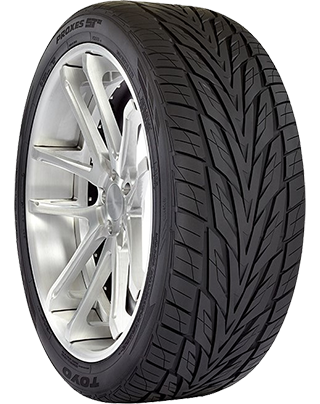
- No warranty
- All-Season
- Light Truck Tires
Choosing 2010 Toyota Tundra Tires
Beyond the correct tire size, you also want to think about a couple of other things when getting new Toyota Tundra tires like how and where you drive, and how much you want to spend. Think about where you live (countryside vs. city vs. mountains) and the kind of unexpected weather you're likely to experience when evaluating your driving conditions. It's not uncommon for drivers in states that experience all four seasons to buy more than one set of tires. one for winter and one for summer. Other drivers prefer the convenience of all-season tires. They make one trip to the tire shop and they're pretty much ready for rain, light snow, or sun!
Your personal driving style is the next factor to consider. If you're an avid off-roader who yearns to pioneer new paths, you have very different tire needs than a highway commuter who doesn't hit the hills very often. Talk to a tire technician at Firestone Complete Auto Care for help choosing the best tire for you, or start shopping for Toyota Tundra tires online.
Toyota Tundra Installation and More
Firestone Complete Auto Care installs more tires on more cars than most other companies. We're a tire store that also offers professional tire installation, maintenance, and rotation, along with complete auto care. Shop 2010 Toyota Tundra tires online and schedule an installation appointment.
2010 Toyota Tundra Tire Q&A
-
Why check Toyota tire inflation? The right tire pressure can make all the difference. Proper tire inflation helps increase fuel economy, improve braking time, and boost tire lifespan! Even a small change in tire pressure can impact your driving.
-
Why are there numbers on the side of my Toyota Tundra tires? The numbers on your tire sidewall give you information about tire speed rating, traction, treadwear, tire size, and load carrying capacity. Chat with a tire technician to learn how to read the numbers on your Toyota tires!
-
How do I check the tread depth on my Toyota tires? Stay on top of your tire tread depth to help avoid a dangerous drive. You can check tread depth with a penny. Hold the penny so that Abraham Lincoln is facing you, then place your penny into a tread groove upside down. If you can see the top of Abe’s head, your tread is shallow and it might be time for new Toyota Tundra tires. Grab a penny. Hold the so that Abe Lincon's head is facing you and his hair is pointing toward the ground. Then, place the penny into a tread groove. If you can see the top of Abe’s head, your tread is shallow and it might be time for new Toyota Tundra tires.
Repair Services for Your 2010 Toyota Tundra
When to repair, when to replace? Click on a repair below to learn more about Toyota Tundra repairs at Firestone Complete Auto Care.
About 2010 Toyota Tundra Repairs
For most drivers, the words “car repair” don’t exactly spark excitement. But at Firestone Complete Auto Care, we strive to give you the excellent repair experience you deserve. Bring your 2010 Toyota Tundra in for repair services and our technicians will take care of your Tundra like it was their own. We’ll start by assessing what repairs may be needed, and we’ll provide you with a detailed explanation of what we recommend. We value your trust, so we recommend only the repairs we think are necessary for your safety on the road.
How Much Are Toyota Tundra Repairs?
The cost to repair your 2010 Toyota Tundra depends on what kind of repair you need, prices of appropriate replacement parts, the labor involved, and the state you live in. We update them regularly to keep our deals fresh!
A few different aspects can influence repair costs for your 2010 Toyota Tundra, like
2010 Toyota Tundra Auto Repair Q&A
-
Can scheduled maintenance help me avoid repairs? The cheapest 2010 Toyota Tundra repair is the one that isn’t necessary in the first place! Staying up-to-date with your car’s scheduled maintenance services is a great way to keep future repair costs low.
-
What does it mean to be 'in tune' with your car? You know your vehicle. You also know when something feels 'off' with your vehicle. Pay attention when things don't run like they used to and stop by for a Courtesy Check when you notice an unusual sign, smell, or sensation. We might be able to help you prevent Toyota Tundra repairs!
-
Do I have to get the repairs you recommend for my Toyota? Trust is more than just a saying on the wall. It’s a window underneath it. That’s why we won’t recommend services or repairs for your 2010 Toyota Tundra unless we think they’re vital to your safety on the road.
Brake Repair for Your 2010 Toyota Tundra
Your Toyota Tundra engine may be strong and reliable. But if you can't stop it, then it's scrap metal. Don't wait if you're experiencing brake squeaks or a loss of braking power. Safe driving and responsive brakes go hand in hand. Plus, ignoring your brake problems can result in more damage and higher brake repair bills. Go to your local Firestone Complete Auto Care for 2010 Toyota Tundra brake repairs. We offer many affordable brake repairs like brake pad/shoe replacement, brake rotor/drum refinishing, brake fluid exchange/bleeding, and brake caliper and wheel cylinder service.
Questions About Your Toyota Tundra Brakes
-
What is causing my Tundra to shake when I brake? Feeling shaking or vibrating in your Tundra as you brake might indicate a few different problems, including worn brake pads or rotors, loose suspension components, damaged brake calipers, or warped rotors. Book an appointment for a free brake inspection as soon as you notice a problem with your brakes.
-
How often do I need to replace my Tundra brake pads? Brake pads typically last about 30,000 to 40,000 miles. However, driving conditions can affect this range. Sticking to highway driving and braking smoothly can help extend the life of your brake pads, while towing heavy loads or frequently riding your brakes can shorten it.
-
Can brake fluid leak when my Tundra is off? Because your Tundra brake system is a closed hydraulic system, it should not leak brake fluid. However, if components in your brake system have worn out or been damaged, it might cause brake fluid to leak.
When to Get Toyota Tundra Drivetrain Repairs
Drivetrains for front, rear, and all-wheel-drive and 4WD vehicles are not all the same. You don't want to go to any random shop for drivetrain repair. You want to come see the technicians at Firestone Complete Auto Care. We can help repair all of your 2010 Toyota Tundra drivetrain components Your Tundra might need driveshaft repair if you notice heavy vibrations in your floorboards, clunks when shifting, resistance when turning, or vibration as your vehicle accelerates.
2010 Toyota Tundra Drivetrain Q&A
-
What are the symptoms of a damaged Toyota drivetrain system? Your Toyota Tundra drivetrain might be damaged if you notice strange noises from the rear of your vehicle, see fluid leaking, or have issues turning.
-
Why is my Tundra malfunction indicator light (MIL) on? A multitude of problems can activate your Tundra’s malfunction indicator light (better known as the check engine light), including issues with the engine, transmission, sensors, electrical system, or connectors.
-
Is a drivetrain malfunction in my Tundra serious? A drivetrain malfunction in your Tundra should never be taken lightly. Driving with a malfunctioning drivetrain can put you in danger and lead to further vehicle damage, so it's essential to have a qualified mechanic assess and repair the problem as soon as possible.
2010 Toyota Tundra Alignment Services
An alignment involves making adjustments to your Toyota Tundra's suspension system, the connection between the vehicle and the wheels. In an alignment service, your tire angles are adjusted according to measurements recommended by Toyota. Why? So that your tires can make contact with the road at the best possible angle. Before we adjust the alignment of your 2010 Toyota Tundra, we’ll start by checking the current alignment angles. After that, we can adjust your wheel alignment angles until they match Toyota’s recommended measurements.
Questions About Toyota Tundra Alignment
-
How can I avoid knocking my Toyota Tundra out of alignment? Potholes and uneven roads can knock your car out of alignment, so stay aware of the road ahead and adjust your speed (or avoid these obstacles whenever it’s safely possible).
-
When should you get a wheel alignment for your Tundra? Typically, your alignment should be checked every 6,000 miles or 6 months, whichever comes first. Double-check your Tundra owner’s manual for Toyota's exact recommended schedule.
-
Do you need to get your Tundra wheels aligned when you get new tires? You likely aren't required to get an alignment when you put new tires on your Tundra, but it's a super smart idea! An alignment can help ensure optimal tire wear, fuel efficiency, and handling. Still, you should reference your Tundra owner’s manual for what’s recommended.
2010 Toyota Tundra Engine Services
If your 2010 Toyota Tundra needs engine repair, our expert techs will let you know what needs to be done and why before they get started. We never do any work without your sign-off. If a repair isn’t urgent right now, we’ll let you know. But if immediate repairs are necessary for your safety, we’ll make sure that's clear, too. We want to provide you with the information you need to make an informed engine repair decision. Turn to Firestone Complete Auto Care for your 2010 Tundra engine repairs and you can feel good knowing that we only use Toyota-compliant replacement parts such as the serpentine belt, oil gasket, ignition coil, or other parts.
2010 Toyota Tundra Engine Q&A
-
Why does my Tundra’s check engine light come on when I start it? Generally, your check engine light turning on upon ignition is not a bad thing. It’s just your Tundra firing up its circuits. The light should turn off in a bit, but come see us if it doesn't.
-
Are Toyota Tundra engine noises bad? Strange under-the-hood noises can point to problems within your Toyota Tundra engine. Tapping or knocking could mean you need an oil change. Whistling sounds could mean you have an intake leak or misaligned belt. Squealing may be caused by a loose fan belt, and grinding could be a sign that something is wrong with your brakes — not the engine.
-
Are you unknowingly damaging your Toyota Tundra engine? Certain driving habits can hurt your engine. These habits include driving on an empty fuel tank, revving your engine while the vehicle is in Park, or slamming the gas pedal while the engine is still cold. Steer clear of these habits to help protect engine performance and efficiency.
Tire Repair for Your 2010 Toyota Tundra
If your 2010 Toyota Tundra is in need of a tire inspection or possible flat tire repair, Firestone Complete Auto Care has your back. Our tire technicians can determine whether it's safe to plug and patch the tire, or whether it needs to be replaced. We'll start by evaluating the state of wear, the location of damage, type of damage, and the size of the damage.
If your 2010 Toyota Tundra tire puncture can be repaired, the repair process is actually fairly simple: (1) Take the tire off the wheel for easy inspection, (2) fill the puncture to keep the moisture out, and (3) re-seal the inside lining of your tire so that air won’t escape.
Frequently Asked Toyota Tundra Tire Repair Questions
-
Can I drive my Toyota on a flat tire? Driving on a flat tire is not a good idea. Your Tundra engine will keep running with a flat tire, but you could damage your wheel by continuing to drive on a flat.
-
Will a temporary sealant fix my Toyota's flat tire? Fast fixes are a mixed blessing. They’ll help you get your Toyota Tundra to Firestone Complete Auto Care, but don’t count on them to keep you on the road for very long. Using a temporary sealant may also void a Bridgestone or Firestone tire warranty.
-
What can cause Tundra tires to keep losing air? If your Tundra tires are always losing air, you may have a puncture, damaged wheel, or leaking valve stem.
2010 Toyota Tundra Maintenance
You want your Toyota Tundra to last as long as possible. If you put in the effort to keep up with proper maintenance, you could hit 200,000 miles (or beyond!) in your Tundra.
2010 Toyota Tundra Maintenance Schedule
What is the manufacturer recommended maintenance schedule for a 2010 Toyota Tundra? Find maintenance info for your vehicle.
About 2010 Toyota Tundra Scheduled Maintenance
Instead of waiting for an issue to arise with your Tundra, you can stay ahead of problems before they even begin. Just follow your 2010 Toyota Tundra maintenance schedule! Toyota knows your vehicle inside and out (they made it, after all!), so they’ve designed this schedule with your car’s unique needs in mind. Scheduled maintenance services can vary depending on driving conditions, climate, and other factors; however, recommended maintenance usually includes services like tire rotations, vital fluid checks/exchanges, filter changes, brake pad replacement, and oil changes. Scheduling routine service appointments is one of the best ways to help extend your Tundra's life, keep you safer on the road, and prevent common 2010 Toyota Tundra problems.
Learn About Vital Maintenance Needs for Your Toyota Tundra
Head to your nearest Firestone Complete Auto Care in your 2010 Toyota Tundra for factory-recommended routine maintenance and our technicians will jump right in with a Courtesy Check. The Courtesy Check helps us see what we’re working with under the hood, and allows us to alert you to any potential problems before they worsen. Every Courtesy Check will include a visual inspection of your Tundra. We’ll check your head and tail lights, fluid levels, filters, tires (and their alignment!), and windshield wiper blades. We’ll also perform a free battery check to determine your battery’s charge level.
Firestone Complete Auto Care is your one-stop shop for 2010 Toyota Tundra maintenance and repairs. We can help you keep your vehicle (and your life!) running smoothly. Many of our locations have weekend and evening hours for your convenience.
2010 Toyota Tundra Maintenance Q&A
-
When should I have Toyota Tundra alignment checked? Check your car for pothole damage! If you’ve recently hit a pothole (or even if you don’t remember hitting one… they can be sneaky!) check your tire treads, tire sidewalls, and wheels for damage. Potholes can also knock your car out of alignment, so have your alignment checked if you suspect you’ve driven over a rough patch of road lately.
-
When should I switch my Toyota Tundra to high mileage oil? Do you have more than 75,000 miles on your Toyota Tundra? If so, request to switch to high mileage oil at your next oil change. This type of oil is specially formulated to keep aging engine parts in the best possible condition.
-
Why are my Toyota dashboard lights on? It's better to get them addressed as soon as possible. An illuminated dashboard light means something in your vehicle isn't functioning like it should. Letting problems linger can mean bad news for your Toyota Tundra, so be sure to take your car in for service as soon as you notice an illuminated dashboard light.
The Right Battery Size for a 2010 Toyota Tundra
Need more info about Toyota Tundra batteries?
| Battery | Engine | Warranty | Cold Cranking Amps | |
|---|---|---|---|---|
| 27F-3 | V6/4.0L | Replacement 24 months | Performance months | 710 |
| 35-2 | V6/4.0L | Replacement 36 months | Performance months | 640 |
| 24F-RP | V6/4.0L | Replacement 48 months | Performance months | 750 |
| 24F-3 | V8/5.7L | Replacement 24 months | Performance months | 650 |
| 24F-6 | V8/5.7L | Replacement 36 months | Performance months | 750 |
| 24F-RP | V8/5.7L | Replacement 48 months | Performance months | 750 |
| 24F-3 | V8/4.7L | Replacement 24 months | Performance months | 650 |
| 35-2 | V8/4.7L | Replacement 36 months | Performance months | 640 |
| 24F-RP | V8/4.7L | Replacement 48 months | Performance months | 750 |
| 24F-3 | V8/4.6L | Replacement 24 months | Performance months | 650 |
| 35-2 | V8/4.6L | Replacement 36 months | Performance months | 640 |
| 24F-RP | V8/4.6L | Replacement 48 months | Performance months | 750 |
2010 Toyota Tundra Car Batteries
Generally, car batteries last from three to five years. Check your battery regularly and replace it as needed so it doesn’t leave you and your Toyota Tundra stranded. Watch for signs that your current battery is getting too old or too weak. A slow engine crank, an illuminated battery or check engine light, swollen battery case, corroded battery posts, or faded headlights can all be signs that your battery needs attention.
Or, you can get a complimentary battery check at your nearest Firestone Complete Auto Care. Visit us for a complimentary battery check and, if needed, a replacement battery for your 2010 Toyota Tundra. Automotive batteries are just one of our many areas of expertise. Our expert technicians understand Toyota service recommendations for Tundra car batteries’ reserve capacities and cold cranking amps. Get help choosing the battery size that matches your vehicle, and schedule a fast car battery replacement at your earliest convenience.
Answers to Your Toyota Tundra Car Battery Questions
-
Why doesn’t my Toyota Tundra battery stay charged? A car battery that needs to be jump-started every time is as good as dead. It may be getting old. Or, you’ve been leaving the doors slightly open and the dome lights on during the night. Stop in for a free battery check at your nearest Firestone Complete Auto Care and learn more about your battery's charge.
-
How long do car batteries last? A car battery normally lasts three to five years, but this number can vary based on battery type, your driving habits, and battery maintenance.
-
What is the white, crusty stuff around my Tundra’s battery post? If you notice white, crusty stuff around the battery terminals of your Tundra, it's likely corrosion. A chemical reaction between battery acid and the air can create a white, powdery substance that builds up over time on the terminals. This buildup can interfere with the electrical connection between the battery and your Tundra’s electrical system, potentially leading to poor performance, difficulty starting, and other issues.
2010 Toyota Tundra Oil Changes
Toyota recommends changing your 2010 Tundra’s oil at regular intervals. Your Tundra may need an oil change right away if your check engine/oil change light is on, you hear knocking sounds coming from the engine, sense an oil smell in the cabin, or notice an unusual amount of exhaust. You may also need an oil change more frequently than Toyota recommends if you haul heavy loads, frequent dusty roads, adventure off-road, or go at low speeds on long distance trips.
Whether you need high mileage oil, synthetic oil, or conventional oil, you'll find the right 2010 Toyota Tundra motor oil at Firestone Complete Auto Care. Consult Toyota's recommendations to select the right 2010 Tundra oil and talk with a teammate to learn more about our oil options: Quaker State® Advanced Durability™ conventional oil, Pennzoil® High Mileage Vehicle® motor oil, Pennzoil Platinum® Full Synthetic motor oil with PurePlus™ Technology, and Shell Rotella® heavy-duty engine oil. In an oil change service, one of our techs will change your Tundra’s oil, replace and recycle your used oil and oil filter, inspect all of your other filters, top-off important fluids, and perform a free inspection on the rest of your vehicle. Get professional engine care by making an oil change appointment for your Tundra today.
Oil Change Q&A for Your 2010 Toyota Tundra
-
Why is my Toyota Tundra oil light illuminated? Your Toyota Tundra oil change reminder light may come on if you're overdue for an oil change. The oil pressure light will typically come on if the oil level in the engine is too low, the oil pump is failing, you have a clogged oil filter, or there's a faulty oil pressure sensor.
-
How hard is it to change Toyota Tundra oil at home? First off, changing your own oil isn’t as easy as you’d think. You’ll have to buy special tools and figure out a way to recycle the old oil properly. Getting a professional oil change reduces the risk of something going wrong during the service, but also helps your car perform down the road.
-
Why is my Toyota Tundra exhaust smoke grayish or blue? Your engine could be burning oil due to a leak. It may be time for a pro to take a look. A leak can be caused by a variety of issues including faulty valve seals, blown piston rings, or damaged cylinder walls.
2010 Toyota Tundra Engine Tune-Ups & Maintenance
Regular engine tune-ups can optimize your Tundra’s power on the road. Your local Firestone Complete Auto Care offers a range of engine tune-up services for your 2010 Toyota Tundra. One option is the standard Firestone Tune-Up. It includes a complete visual inspection of engine components, installation of new spark plugs, and a lifetime warranty on parts*. Another service option pays special attention to the filters in your Tundra. Specifically, we replace the fuel filter and air filter. Our third service is a thorough cleaning of the fuel system. During this type of tune-up, we use a three-step process to get rid of harmful varnish, dirt, and carbon deposit buildup in your Tundra’s fuel injectors, throttle body, and throttle plate. This goes a long way in boosting your fuel system’s overall performance. Here’s something to remember when choosing services: the mileage and service history of your Tundra can determine what kind of service it needs. Ask one of our technicians what your vehicle needs, based on your driving habits and your car’s current condition.
*Ask a Firestone Complete Auto Care teammate about full terms and conditions for warranties.
Questions About 2010 Toyota Tundra Engine Tune-Ups
-
What happens if my Toyota Tundra spark plugs fail? Replace spark plugs on time or about every 30,000 miles or so. Spark plugs are small but mighty. The spark of electricity that the plug emits across a small gap creates the ignition for the combustion needed to start your car. Without that spark, your car won't start.
-
What does a puddle underneath my Toyota Tundra mean? Puddles could indicate an oil leak, coolant leak, or brake fluid leak– all of which can critically hurt your engine. Have your engine inspected as soon as you spot a pool of liquid in your usual parking spot.
-
How often should I clean my Toyota Tundra fuel injectors? The cleaning schedule for vehicle fuel injectors varies depending on your driving conditions and the type of fuel you use. Some manufacturers suggest cleaning your fuel system as part of routine maintenance, while others will recommend it on an as-needed basis if you’re experiencing poor performance. Reference your Toyota owner’s manual for exact guidelines.
2010 Toyota Tundra Suspension Service & Repair
During the first few years you had your 2010 Toyota Tundra, the ride was probably so smooth that you didn’t even think about it! Lately, though, your ride’s been feeling a little bumpy. Perhaps your Tundra feels bouncy, drifts to one side, or makes a weird sound when you drive over a speed bump or turn. The first sign of problems is a good time to bring your 2010 Toyota Tundra in for suspension and steering service. We’ll get to the root of the issue and, if your Tundra suspension system needs repair, we’ll explain what your car needs and how much it’ll cost to get it done. We won't begin any work without your permission.
2010 Tundra Steering & Suspension Q&A
-
Why is my Toyota Tundra bouncing excessively? If it feels like you’re on a trampoline every time your Tundra goes over a bump or dip, you may have a problem with your struts or shocks. Faulty shocks and struts can’t properly absorb road bumps, leading to a bouncy ride.
-
Why does my Tundra's nose dive down when I hit the brakes? When you brake, the forward momentum combined with your vehicle's weight sends a lot of force to the vehicle's front end. A bad suspension can cause all that weight and force to push the front end downward.
-
Does tire pressure and tread depth impact my Toyota's suspension? Keeping your tires properly inflated can help reduce strain on the suspension, and also help you notice when you need new tires. A tire that doesn't have an adequate amount of tread can't grip the road or function as well as the manufacturer intended.
A/C Service for Your 2010 Toyota Tundra
Our technicians will work to solve your 2010 Toyota Tundra A/C problems to the best of their ability. During this initial A/C performance check, we’ll look at the state of your 2010 Toyota Tundra’s A/C system to evaluate what repairs are necessary (if any). We’ll test overall system performance, check for any leaks, and measure the system pressure.
When we perform an A/C repair on your 2010 Toyota Tundra, we’ll also do an A/C evacuation and recharge. To do this, one of our technicians will remove the refrigerant in your A/C system (if there is even any left to remove). Then, they’ll use Toyota’s specifications to evacuate the system. To finish, we’ll add new refrigerant to recharge the A/C system.
Questions About 2010 Toyota Tundra A/C Systems
-
Why do I get hot air from my Tundra A/C? Maybe your A/C starts cool but then gets warm. Or maybe it never gets cold in the first place. Either way, your A/C troubles could be traced back to a clogged expansion valve, faulty compressor clutch, blown fuse, or leak.
-
What can cause an A/C system leak? Over the years, the rubber seals and gaskets in your Tundra’s A/C system naturally degrade. Moisture can get into the system and cause a malfunction, or parts can simply wear out so that your system no longer seals properly.
-
What is causing my Tundra’s A/C to only work when the car is in motion? A problem with one or more of your air conditioning or electrical system components could cause the A/C to only work when your Tundra is moving. You may be low on refrigerant, or the cooling fan could be faulty.
Transmission Services for 2010 Toyota Tundra
Your transmission carries power from the engine to the wheels so that you can drive at the speed you desire. Since the transmission has to translate the precise amount of power for your desired amount of speed, a tiny transmission issue can take a major toll on your car’s performance. Toyota Tundra transmission problems can present themselves as shifting delays, jumping or grinding during acceleration, the car shaking at any speed, or whistling noises or a burning smell coming from beneath the hood. If you ignore Toyota Tundra transmission issues you might notice your fuel economy decrease or find that your Tundra isn’t working at all. Our technicians are trained to service 2010 Toyota Tundra transmission systems according to vehicle manufacturer recommendations. As soon as you suspect something’s wrong with your Tundra’s transmission, book an appointment at your local Firestone Complete Auto Care to help keep your Toyota running for miles and miles.
2010 Toyota Tundra Transmission Q&A
-
Does my Tundra's transmission fluid need to be inspected? Regularly checking and exchanging your 2010 Tundra’s transmission fluid is one of the best ways to help the transmission system perform. Some technicians would say that between 30,000 and 60,000 miles is a good timeframe for having your Toyota's transmission fluid checked and replaced, but that timeline can vary depending on how your vehicle is used and your manufacturer’s recommendations. The good news is that transmission fluid leaks are affordable to repair and easy to spot.
-
Can Toyota Tundra transmission fluid leak? Over time, transmission fluid can leak from your Toyota Tundra, potentially causing transmission problems. A transmission fluid leak may be caused by a damaged transmission pan, faulty transmission cooler lines, worn-out seals, a cracked transmission housing, or an overfilled transmission.
-
Can I drive my Toyota Tundra with a transmission fluid leak? Driving your Tundra with a transmission fluid leak is highly discouraged. Transmission fluid is vital to the smooth operation of your transmission system, and a leak can put the entire system at risk. A transmission fluid leak may lead to decreased performance, overheating, and possibly even transmission failure.
Get a 2010 Toyota Tundra Vehicle Inspection
Every service performed at Firestone Complete Auto Care includes a multi-point Courtesy Check. First, a technician will pop the hood on your Toyota Tundra and test the battery to see how much charge it has left – and determine if it may fail in the near future. We’ll follow the battery inspection with a visual check of your Toyota Tundra’s filters, lights, wiper blades, alignment, tires, hoses, belts and fluid levels.
We perform a Courtesy Check any time you bring your car to a local Firestone Complete Auto Care for service, but we can also dig deeper and perform a Complete Vehicle Inspection on your 2010 Toyota Tundra if you prefer. A Complete Vehicle Inspection includes everything in a Courtesy Check, plus an examination (by hand!) of your steering, suspension, brakes, and exhaust system. With this inspection, we want to help you stay on top of any issues that may need immediate attention in order to prevent further damage.
Depending on your location, you may be able to complete your vehicle’s safety tests or state inspection at your nearest Firestone Complete Auto Care. Specific requirements for these types of inspections vary by state.
FAQs for 2010 Toyota Tundra Vehicle Inspections
-
How do I know if I should have an inspection on my Toyota Tundra? It needs a check-up if something feels 'off' to you, the driver. Your Toyota Tundra could benefit from a Courtesy Check if it has any illuminated dashboard lights, you hear weird noises coming from any part, the engine doesn't start sometimes, or your vehicle pulls to one side.
-
My 2010 Toyota Tundra failed the state inspection test. Can you fix it? There's a good chance we can. Stop by for a full system inspection and we'll get to the root of the issue.
-
When should I get a complete vehicle inspection for my Toyota Tundra? You should bring your Toyota Tundra in for a full vehicle inspection if something weird happens and you can’t find the problem. A new dashboard light might come on, you may hear strange sounds under the hood, or your steering might feel off. A complete inspection is also a great idea before a road trip for added peace of mind.
2010 Toyota Tundra Radiator Repair & Service
Regular, proactive service on the radiator in your 2010 Toyota Tundra is crucial to keep your engine in the best possible shape for years to come. To keep your radiator functioning, Toyota recommends replacing your antifreeze or coolant at scheduled intervals but it’s a good idea to keep your eyes open for any indication that your radiator is failing. Your radiator could be close to causing an engine breakdown if you notice leaking coolant, overheating, or an illuminated low coolant dashboard light.
If you bring your vehicle to Firestone Complete Auto Care, we start with a comprehensive inspection of your Toyota Tundra’s cooling system. We then do a machine-powered radiator exchange, replenish flushed chemicals, sealants, and lubricants, and then pressure check for leaks. If you’re about to lose your cool over a too-hot engine, rest assured that your 2010 Toyota Tundra is in good hands at Firestone Complete Auto Care.
2010 Toyota Tundra Radiator Q&A
-
What does an illuminated coolant temperature light mean for my Toyota? Pay attention to the temperature gauge and lights on your dashboard. If a low coolant warning light comes on or your dashboard temperature gauge keeps rising, it’s likely that your engine is about to overheat (and could leave you stranded on the road). Wait for the engine to cool down, then have your coolant system checked immediately at your nearest Firestone Complete Auto Care.
-
What is causing my Tundra to overheat? Low coolant, a damaged cooling fan, a faulty water pump, a malfunctioning thermostat, or a clogged radiator could all cause your Toyota Tundra engine to overheat.
-
Why does the radiator in my Tundra sound like it’s rumbling or boiling? There could be air pockets in your Tundra’s cooling system. You might also have a clogged radiator or faulty radiator cap (this last one is an easy fix!).